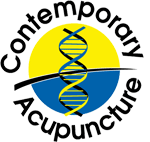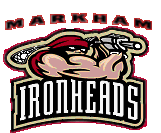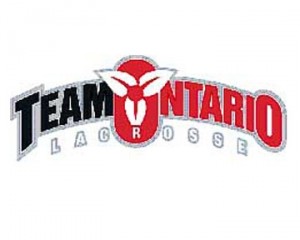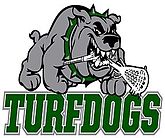- Physiotherapy
- Acpuncture
- Acupunture with electrical stimulation
- Functional Training
- Proactive Training/Therapy
- Pre and Post Operative Rehabilitation
- Athletic Therapy
- Manual Therapy
- Active Release Technique (ART)
- Modalities
- Heat/Cold
- Gait Assessment
- Team Training and Injury Prevention Talks
- On Site Game Physiotherapy/Athletic Therapy
- In Home Physiotherapy/Athletic Therapy Treatment
Click Here To BOOK AN APPOINTMENT
SEE BELOW FOR FULL DESCRIPTION
Physiotherapy – Physiotherapists are registered with the College of Physiotherapy and provide active, individualised, evidence-based treatment for orthopaedic and neurological conditions. A variety of treatment techniques such as manual therapy, functional exercises or modalities may be used with the goal of optimizing a patients overall function, maintaining independence and preventing injuries. The physiotherapy treatment approach is client-centered. Each visit is one on one (30-60 minutes) and each treatment plan will be individualised and focused on each patient’s specific life demands and goals. Physiotherapists have extensive training in orthopaedic injuries, sport specific rehabilitation and neurological conditions. Due to extensive Manual therapy courses some physiotherapists can also provide ART – active release techniques, acupuncture, peripheral and spinal mobilizations and manipulations. Due to the individualised, client centered approach, as well as the evidence-based treatment and increased one on one time, patients typically require fewer treatment sessions.

Acupuncture – Acupuncture is a treatment where fine needles are inserted into various points on the body, some of the points will feel like an ache, some may feel like a small pinch and some will be painfree. Acupuncture benefits include increased circulation, decreased pain, increased muscle recruitment, increased relaxation and decreased muscle tone or trigger points. Needles come individually packaged and sterile and are for one time use only.
Acupuncture with electrical stimulation – Electrical stimulation can be added to the needles to increase the effects of acupuncture listed above. Depending on the nerves that the therapist would like to stimulate and the stage of healing a therapist can chose different frequencies of current for various effects. The current is painfree and feels like a strong buzzing or tapping sensation.
Functional Training – Functional training is specific to each patient. It involves strengthening the body for the specific demands it will have to face for sports, work and daily life. Individualised functional training will ensure you are able to get back to the things you enjoy after an injury and help you stay injury free.
Proactive Training/Therapy – If you have not had an injury and are an active individual a functional assessment can help address any areas of muscle imbalances or joint restrictions before an injury occurs. A proactive functional training program can be designed to ensure you are working to prevent any injuries before they happen. Whether you are being rehabilitated from a specific injury or being proactive and trying to prevent injury your program will be designed specifically to suit you and your individual goals and lifestyle.
Rehabilitation
Pre-Operative – The stronger you are before surgery the quicker you will rehabilitate after. As such we provide pre-operative rehabilitation programs to help strengthen the specific area and get you in the best shape possible pre-surgery in order to allow the best outcome post-surgery.
Post-Operative – With new advances in medicine it is now more and more apparent that is very important to get moving right after surgery. Depending on your surgery you may have specific movement or weight bearing restrictions. You should book in for physiotherapy ASAP after surgery. Your treatment on the day after surgery may be more passive and focus on surrounding joints, decreasing swelling and initiating muscle recruitment, however the sooner you start mobilising the quicker you will recover. A physiotherapist will assess you and make a specific rehabilitation plan depending on your surgery, any surgical restrictions and your specific goals.
Athletic Therapy – Athletic Therapists assess and treat orthopaedic and neurological conditions and use a variety of treatment approaches including modalities, manual therapy, soft tissue techniques and functional stretching and strengthening. Athletic Therapists have a lot of specific training with regards to on field first response, treatment of acute athletic injuries, taping, sports specific rehabilitation and functional return to sport training/rehabilitation. Athletic therapists are involved with sports from the recreational to professional levels and are also involved in international events and Olympics.
Manual Therapy – Physiotherapists and Athletic Therapists use a variety of hands on manual therapy techniques to mobilize joints and soft tissue. Some physiotherapists have taken advanced courses through the Orthopaedic Division of the CPA and are working towards or have achieved their diploma in manual and manipulative physical therapy. This advanced certification teaches therapists advanced mobilization techniques, as well as manipulations for the peripheral joints and the spine. Advanced training in manual therapy is an advantage for therapists in treating and assessing injuries. Often the root cause of an injury is missed and the symptoms become chronic. Manual therapy training allows your therapist to look at the body as a whole and uncover additional areas of restriction that may be contributing to the symptoms. This will provide a more holistic approach to treatment, and will be more successful at treating resulting symptoms.

Active Release Techniques (ART) – ART or Active Release Technique is a technique that was developed and refined by chiropractor Dr. Michael Leahy DC, CCSP. It is a soft tissue technique that uses patient generated movement to improve muscle length, decrease adhesions, break up scar tissue, decrease nerve entrapments and improve circulation. ART can be used to treat muscle, tendon, nerve, ligaments and fascia. As adhesions build in tissue muscle can become shorter and weaker. This affects both the tissue, joint and nerve mobility around the scarred tissue. Scarring can result in decreased blood flow and mobility to the affected tissue as well. The goal of ART is to improve the mobility of the tissue, joints and nerve by decreasing adhesions and improving blood flow. To be trained to perform ART health care providers (massage therapists, chiropractors and physiotherapists) must take the ART courses and pass the corresponding written and practical exams. ART providers are the main therapy providers for various sports teams and the Ironman series of races.
ART treatment is often combined with other forms of manual and soft tissue treatments such as physiotherapy, joint mobilizations or manipulations, acupuncture and functional exercise. In combination with working on tissue that is scarred and has decreased length, exercises must also be incorporated to address any muscle imbalances that lead to this condition in the first place. Similarly joint mobilizations or manipulations might be required to address underlying joint restrictions. Your first visit will include a full assessment of joint, nerve and tissue mobility and strength in order to determine
the best course of treatment. Treatment will be individual and specific to the functional sport or work demands of each patient.

Modalities – Modalities may be incorporated into your physiotherapy treatment. At Inner Strength PHYSIOTHERAPY our focus is hand on manual therapy and functional training. Modalities will rarely be the main focus of your treatment, however they be included to supplement the manual one on one treatment. Modalities are mostly used for symptomatic relief which is why they should be used in combination with other treatment approaches. Modalities such as TENS, acupuncture, electrical acupuncture, ultrasound and muscle stimulation can help to decrease pain, increase muscle recruitment and promote tissue healing.
Heat/Cold – Heat and cold therapy may also be a part of your physiotherapy treatment, this may be at the clinic or at home. This will not be the main focus of your treatment, however may be incorporated to decrease any post treatment soreness or to increase tissue mobility pre-treatment.

Gait Assessment – Gait assessment is used for running and walking gait. Assessment involves video taping walking or running gait and breaking down the movement to frames. This helps us to look at the body as a whole and determine if there are any gait compensations taking place. You gait assessment will be compared to your physical assessment to determine any areas of stiffness or muscle imbalances. This is especially important for runners and recreational walkers. Without an adequate gait assessment it is often hard to treat ongoing issues. Once your gait and physical assessment have shown areas that need to be worked on your rehabilitation program will work to correct these imbalances. A gait assessment is also beneficial before injury to pinpoint any areas of weakness that can be addressed ahead of time to prevent injury.

Team training and Injury prevention talks – Injury prevention talks for teams and team sports specific training is available for all sports and ages. Learning how to incorporate a dynamic warm up, as well as a sports specific strengthening program will help to significantly decrease injuries for your team this season. Contact Regan Physiotherapy and Athletic Therapy for more information and to plan what would best suit the needs of your teams. Services available in Durham and York Region.
On site game physiotherapy/athletic therapy – On site Physiotherapy and Athletic Therapy is available for your team. Contact Inner Strength PHYSIOTHERAPY for more information and to discuss your teams needs. Services can include emergency first aid, on-site treatment and assessment, taping, stretching, ART – active release techniques.
In Home Physiotherapy/Athletic Therapy Treatment – In home treatment is also available. Please contact Inner Strength PHYSIOTHERAPY for more information.
